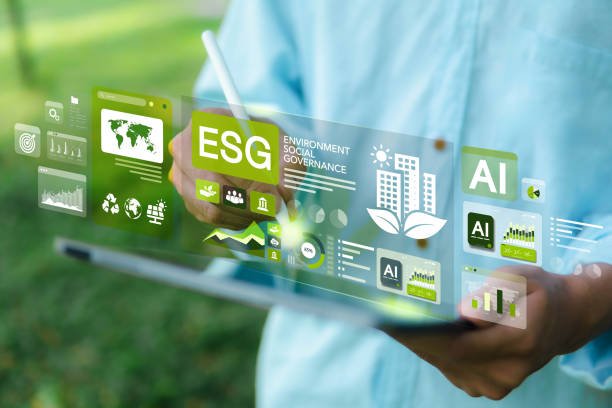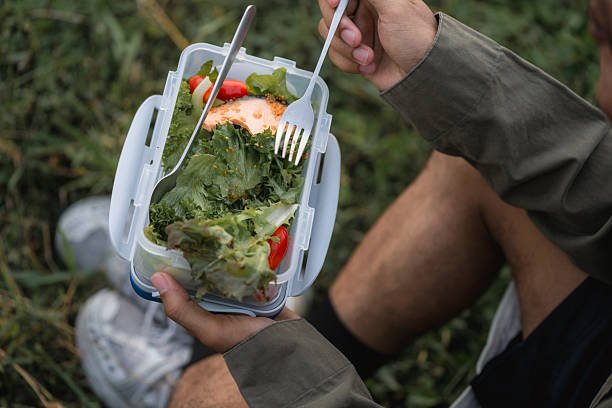Hey there, eco-explorers! 👋 Remember that spark of inspiration you felt when thinking about making a real difference for our planet? Sometimes, the sheer scale of environmental issues can feel a bit overwhelming, like trying to empty the ocean with a teaspoon, right? But here at Unplugged Routine, we’re firm believers that big changes often start with small, deliberate actions. Embracing a more sustainable lifestyle isn’t about achieving instant perfection; it’s a journey of continuous learning, adaptation, and the joy of making choices that benefit both ourselves and the incredible planet we call home.
This month, we’re turning our focus towards action with a set of fun and truly engaging Sustainable Living Challenges! Forget about rigid rules or feeling like you’re making sacrifices. Think of these challenges as exciting little experiments in eco-consciousness, designed to open your eyes to new possibilities, help you develop greener habits, and connect you with a more environmentally responsible way of life. Are you ready to inject some thrill into your routine and discover just how rewarding embracing Sustainable Living Challenges can be? Let’s dive headfirst into this eco-adventure!

Table of Contents
1. The Zero-Waste Kitchen Quest: Unleash Your Inner Waste Warrior! 🍎
Let’s be honest, the kitchen can be a major culprit when it comes to generating waste. From food scraps that end up in the bin to the constant stream of single-use packaging, it’s easy to feel like you’re contributing to a never-ending cycle of trash. Our first Sustainable Living Challenge, the Zero-Waste Kitchen Quest, invites you to become a waste warrior and fundamentally rethink what happens to the byproducts of your culinary activities. For one week, or if you’re feeling particularly inspired, the entire month, your mission is to drastically minimize the amount of food waste and packaging that leaves your kitchen.

Here’s your battle plan to conquer kitchen waste:
- Strategic Meal Planning & Smart Shopping: The first line of defense against food waste is planning. Take some time each week to map out your meals. This not only helps you create a focused grocery list, ensuring you buy only what you truly need, but it also encourages you to think creatively about using up ingredients. Got leftover vegetables? They might be perfect for a frittata or a stir-fry! Before heading to the store, check your fridge and pantry to avoid double purchases. Embrace the power of a detailed shopping list and stick to it.
- The Reign of Reusables: Bid farewell to the tyranny of single-use plastic wrap and flimsy plastic bags! Investing in a good set of durable, reusable containers in various sizes can be a game-changer for storing leftovers, packing lunches, and even bringing home takeout. Consider beeswax wraps as a natural and beautiful alternative to plastic wrap. Reusable silicone bags are also fantastic for storing snacks and freezing food. Make it a habit to always have a few reusable shopping bags handy – keep them in your car, your bike basket, or even your everyday backpack so you’re never caught without one at the store.
- The Magic of Composting: Transform your kitchen scraps into black gold! Composting is an incredibly effective way to divert organic waste from landfills, where it decomposes anaerobically and produces methane, a potent greenhouse gas. Whether you have a backyard garden that can benefit from nutrient-rich compost or live in an apartment, there are composting solutions for everyone. Small countertop compost bins are perfect for collecting food scraps, which can then be transferred to a larger outdoor composter or even a community composting program. Explore vermicomposting (worm composting) for an indoor, odor-free option. Websites like the Environmental Protection Agency (EPA) offer comprehensive guides to getting started with composting.
- Bulk Buying Brilliance: Whenever possible, opt for buying pantry staples like grains, pasta, nuts, and seeds in bulk. Many grocery stores and co-ops have bulk sections where you can use your own reusable containers to fill up on these items, significantly reducing packaging waste. Look for local farmers’ markets where you can often find unpackaged fresh produce.
This Sustainable Living Challenge isn’t just about reducing waste; it’s an opportunity to become more mindful of the food we consume, save money on groceries, and even discover the satisfaction of nourishing your own plants with homemade compost!
2. The Conscious Closet Remix: Style with Soul, Not Speed! 👚
The allure of fast fashion, with its constantly changing trends and incredibly low prices, can be tempting. However, the environmental and social costs of this industry are immense, encompassing everything from excessive water and chemical usage in textile production to unethical labor practices and mountains of textile waste ending up in landfills. Our next Sustainable Living Challenge, the Conscious Closet Remix, invites you to step back from the cycle of rapid consumption and cultivate a more thoughtful and sustainable relationship with your wardrobe.
Here’s how to remix your closet for a greener you:
- The No-New-Clothes Commitment: Challenge yourself to go for a set period – a week, two weeks, or even the entire month – without purchasing any brand-new clothing items. This forces you to look at what you already own with fresh eyes.
- Unlock Hidden Style Potential: Shop Your Own Closet! This challenge is a fantastic opportunity to rediscover forgotten favorites and experiment with different combinations you might not have considered before. Take everything out of your closet, assess what you truly love and wear, and then start creating new outfits. You might be surprised at the stylish ensembles you can put together with the pieces you already have.
- The Thrill of Secondhand Treasures: If a genuine need arises during your no-new-clothes period, embrace the wonderful world of secondhand shopping. Explore your local thrift stores, consignment shops, vintage boutiques, and online marketplaces. Not only can you find unique, high-quality items at a fraction of their original cost, but you’re also giving perfectly good clothes a second life, reducing the demand for new production and diverting textiles from landfills.
- The Art of Repair and Care: Extend the lifespan of your beloved garments by learning basic mending skills like sewing a button, hemming pants, or patching a small tear. There are countless online tutorials that can guide you. Proper care, such as washing clothes at lower temperatures and air-drying them whenever possible, can also significantly prolong their life.
This Sustainable Living Challenge is about more than just saving money; it’s about cultivating a deeper appreciation for the clothes we own, reducing our environmental footprint, and breaking free from the unsustainable cycle of fast fashion. It’s about building a wardrobe with intention and style with soul.
3. The Plastic Detox Drill: Breaking Free from Single-Use! 🧴
Our planet is facing a plastic pollution crisis of epic proportions. From clogging our oceans and harming marine life to leaching harmful chemicals into our environment, single-use plastics have become a pervasive problem. The Plastic Detox Drill, our third Sustainable Living Challenge, focuses on actively reducing your reliance on these unnecessary and often harmful items in your daily life.
Your mission to minimize single-use plastic:
- The Reusable Hydration Hero: Carry Your Own Water Bottle: Make a stylish and durable reusable water bottle your constant companion. Not only will you stay hydrated throughout the day, but you’ll also be actively refusing countless single-use plastic water bottles.
- Your Personal Coffee Cup Crusade: If you’re a regular coffee drinker, invest in a reusable coffee cup and make it a habit to bring it with you to your favorite cafes. Many coffee shops now even offer discounts to customers who bring their own cups as a reward for their eco-conscious choice.
- Bag It Right: Embrace Reusable Shopping Bags: Keep a set of sturdy, reusable shopping bags in convenient locations – your car trunk, your backpack, your purse – so you’re always prepared for any shopping trip, whether it’s groceries or a quick stop at a local store.
- Sustainable Swaps in Your Self-Care Routine: Take a look at your bathroom and identify single-use plastic toiletries that can be replaced with more sustainable alternatives. Consider switching to a bamboo toothbrush, shampoo and conditioner bars (which come without plastic bottles), refillable soap dispensers, and reusable cotton rounds for makeup removal.
- Ditch Disposable Dining: BYO Utensils and Say No to Straws: When ordering takeout or eating on the go, politely decline plastic straws and cutlery. Consider carrying a small, lightweight set of reusable utensils in your bag for added convenience.
This Sustainable Living Challenge might require a bit of planning and habit-forming, but it’s an incredibly impactful way to directly reduce your contribution to plastic pollution and inspire others around you to do the same.

4. The Energy Saver Expedition: Power Down for the Planet! 💡
Our homes, while providing comfort and convenience, can also be significant consumers of energy, which often comes from fossil fuels, contributing to greenhouse gas emissions and climate change. The Energy Saver Expedition, our fourth Sustainable Living Challenge, invites you to become an energy detective in your own home and discover simple yet effective ways to reduce your energy consumption and lower your carbon footprint.
Embark on this enlightening energy-saving journey:
- The Phantom Power Patrol: Unplug Unused Electronics: Many electronic devices, even when turned off, continue to draw a small amount of electricity, often referred to as “phantom load” or “vampire power.” Make it a habit to unplug devices like phone chargers, televisions, and computers when they are not actively in use. Using power strips with an on/off switch can make this even easier.
- Illuminate Sustainably: The LED Revolution: If you haven’t already, make the switch to LED light bulbs throughout your home. LED bulbs are significantly more energy-efficient than traditional incandescent bulbs, using up to 75% less energy and lasting much longer, which also saves you money in the long run.
- Thermostat Taming: Finding Your Comfort Zone, Sustainably: Adjusting your thermostat settings by just a few degrees can make a noticeable difference in your energy consumption. Lower your thermostat by a few degrees in the winter when you’re home (and even more when you’re away or asleep) and raise it a few degrees in the summer. Layering clothing in the winter and using fans in the summer can help you stay comfortable at more energy-efficient temperatures.
- Laundry with Less Energy: Cold Water Champion: The majority of the energy used by a washing machine goes towards heating the water. Switching to cold water for most of your laundry loads can result in significant energy savings without compromising cleaning performance for most everyday washes.
- The Natural Dryer: Embrace Air Drying: Whenever the weather permits, opt to air dry your clothes on a clothesline or drying rack instead of using the energy-intensive electric dryer. This is not only better for the environment but can also be gentler on your clothes.
This Sustainable Living Challenge is a practical way to reduce your environmental impact, lower your energy bills, and gain a greater awareness of your household energy consumption.
5. The Water Wise Week: Every Drop Counts! 💧
Water is an absolutely essential resource for all life on Earth, and in many parts of the world, it’s becoming increasingly scarce due to climate change and unsustainable practices. The Water Wise Week, our fifth Sustainable Living Challenge, focuses on cultivating a greater awareness of your water usage and adopting simple habits to conserve this precious resource in your daily life.
Become a champion of water conservation:
- Shorter Showers, Bigger Impact: Reducing the length of your showers by even a minute or two can save a significant amount of water over time. Consider setting a timer to help you stay mindful of your shower duration.
- Fix Those Pesky Leaks: Even a seemingly small dripping faucet can waste gallons of water over a relatively short period. Regularly check your faucets and pipes for leaks and make repairs promptly.
- Mindful Moments at the Sink: Be conscious of the water running while you’re brushing your teeth or washing dishes. Turn off the tap when you’re not actively using the water and only turn it back on when you need to rinse.
- Smart Lawn Care: If you have a lawn, water it deeply but less frequently. This encourages deeper root growth, making your lawn more drought-tolerant. Consider using rainwater harvesting techniques, such as installing rain barrels, to collect water for your garden.
- Full Loads Only: Wait until you have a full load before running your washing machine or dishwasher. This maximizes the efficiency of each cycle and reduces overall water consumption.
This Sustainable Living Challenge is not only crucial for protecting our vital water resources but can also lead to significant savings on your water bill. Every drop truly does count!
6. The Transportation Transformation: Green Wheels and Happy Trails! 🚗🚲🚶♀️
How we choose to travel has a profound impact on the environment, contributing significantly to greenhouse gas emissions and air pollution, especially in urban areas. The Transportation Transformation, our sixth Sustainable Living Challenge, encourages you to explore and embrace more sustainable transportation options in your daily life.
Let’s get moving towards a greener future:
- The Power of Your Own Two Feet (or Wheels!): For shorter distances, opt to walk or bike instead of driving. It’s a fantastic way to incorporate exercise into your routine, reduce your carbon footprint, and even discover hidden gems in your neighborhood.
- Embrace Public Transportation: Make use of available public transportation options like buses, trains, and subways whenever feasible. Public transit is often significantly more energy-efficient per passenger mile compared to individual car use.
- The Buddy System: Carpooling Power: If you regularly travel to the same location as others, such as work or school, consider carpooling. Sharing a ride reduces the number of vehicles on the road, lowering emissions and traffic congestion.
- Future-Forward Vehicle Choices: When it comes time to replace your current vehicle, consider opting for a more fuel-efficient model, a hybrid vehicle, or even a fully electric car. The technology for cleaner transportation is constantly evolving.
This Sustainable Living Challenge can lead to improved air quality in your community, reduced traffic congestion, and potential savings on fuel and vehicle maintenance costs, all while contributing to a healthier planet.
7. The Mindful Mealtime Mission: Nourish Yourself and the Earth! 🌱
Our food choices have a far-reaching impact on the environment, influencing everything from greenhouse gas emissions from agriculture and transportation to land and water use and biodiversity loss. The Mindful Mealtime Mission, our final Sustainable Living Challenge, encourages you to become more conscious of the food you eat and make choices that are both nourishing for your body and gentler on the planet.
Let’s cultivate a more sustainable approach to eating:
- The Plant-Powered Plate: Incorporate more plant-based meals into your diet. Reducing your consumption of meat, particularly red meat, can have a significant positive impact on the environment due to the high resource demands of livestock farming. Explore the delicious world of vegetarian and vegan cuisine!
- Local and Seasonal Delights: Prioritize buying locally grown and seasonal produce whenever possible. This reduces the environmental impact associated with long-distance transportation and supports local farmers in your community. Farmers’ markets are a great place to find fresh, seasonal goods.
- Sustainable Seafood Choices: If you enjoy seafood, make informed choices about the types of fish you consume. Be aware of overfished species and opt for seafood that is sourced sustainably. Organizations like the Monterey Bay Aquarium Seafood Watch program provide valuable guidance on making responsible seafood choices.
- Waste Not, Want Not: The Food Waste Fight Continues: As we discussed in the first challenge, reducing food waste is crucial. Be mindful of portion sizes, store food properly to prevent spoilage, and get creative with using up leftovers.
This Sustainable Living Challenge can lead to improved health, support sustainable agricultural practices, and significantly reduce the environmental footprint of your dietary choices.

Conclusion: Your Eco-Adventure Begins Now! ✨
Embarking on these Sustainable Living Challenges this month is an empowering step towards a more conscious and environmentally responsible way of life. Remember, the goal isn’t to achieve perfection overnight but rather to cultivate a deeper understanding of your impact and gradually integrate more sustainable habits into your daily routine.
We wholeheartedly encourage you to select one or two challenges that particularly resonate with you and give them a try. You might be pleasantly surprised by how achievable, rewarding, and even enjoyable these small yet significant changes can be.
Which of these 7 Thrilling Sustainable Living Challenges are you most excited to embrace this month? Share your intentions and progress in the comments section below! Let’s connect, support each other, and collectively pave the way for a more sustainable and thriving future, one mindful choice and thrilling challenge at a time!